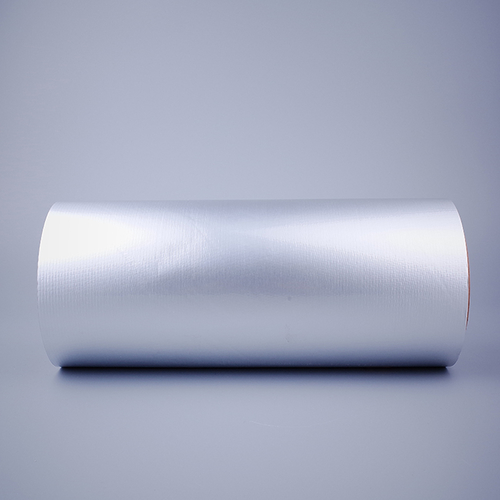Candy Twist Film
Material:Plastic Film
In modern printing, packaging, and document preservation, the need for durable, protective, and visually appealing surfaces has become increasingly important. Laminating film has emerged as a key solution, offering enhanced protection, aesthetic improvement, and longevity for printed materials and packaging products. But what exactly is laminating film, how does it work, and why has it become a critical component in numerous industries?
What Is Laminating Film?
Laminating film is a thin, flexible plastic material applied over paper, cardboard, or other substrates to provide protection and enhance appearance. It can be applied through heat, pressure, or adhesive methods, forming a sealed layer that safeguards the underlying material.
Common laminating films include:
Polypropylene (PP) – Offers clarity and a smooth finish, widely used for documents and packaging.
Polyester (PET) – Strong, durable, and resistant to tearing, heat, and moisture.
Polyvinyl Chloride (PVC) – Provides a glossy or matte finish and strong protective properties.
Laminating films come in glossy, matte, or satin finishes, allowing for both functional protection and aesthetic enhancement.
Why Is Laminating Film Used?
Laminating film serves multiple purposes across industries:

Protection Against Damage – Shields documents, labels, and packaging from moisture, dirt, scratches, and physical wear.
Enhanced Appearance – Provides a glossy or matte finish that improves color vibrancy and visual appeal.
Durability – Increases tear resistance and structural integrity of paper or cardboard materials.
Extended Lifespan – Preserves printed materials for long-term use in books, signage, or promotional materials.
Safety and Hygiene – Seals surfaces in food packaging or medical applications to prevent contamination.
These benefits make laminating film indispensable in printing, packaging, office, and industrial applications.
How Does Laminating Film Work?
The application of laminating film involves several key steps and technologies:
Heat Laminating – The film has a heat-activated adhesive layer that bonds to the substrate when passed through a laminator at a specific temperature.
Cold Laminating – Uses pressure-sensitive adhesive films that bond at room temperature, suitable for heat-sensitive materials.
Roll-to-Roll Lamination – Continuous process for large-scale applications, such as packaging or printed sheets.
Pouch Lamination – Pre-cut pouches enclose documents or images, commonly used in offices and schools.
The process creates a sealed protective layer, enhancing both the durability and appearance of the laminated item.
What Are the Advantages of Laminating Film?
Moisture Resistance – Prevents water damage, making it ideal for outdoor signage, menus, and packaging.
Scratch and Abrasion Resistance – Protects surfaces from daily wear and tear.
UV Protection – Certain films block ultraviolet light, preventing fading and color degradation.
Enhanced Print Quality – Glossy finishes improve color vibrancy, while matte finishes reduce glare for readability.
Flexibility – Can be applied to various sizes, shapes, and materials, including paper, cardboard, and fabric substrates.
These advantages make laminating film a cost-effective solution for both protective and aesthetic needs.
What Are the Common Applications of Laminating Film?
Laminating film is widely used in numerous industries:
Printing and Publishing – Protects book covers, posters, menus, and promotional materials.
Packaging – Enhances product durability, visual appeal, and hygiene in food, medical, and consumer goods packaging.
Office and School Supplies – Protects documents, ID cards, certificates, and educational materials.
Advertising and Signage – Ensures long-lasting outdoor posters, banners, and displays.
Industrial Uses – Protects labels, instruction manuals, and technical sheets in harsh environments.
The versatility of laminating film ensures it adds value to both professional and personal applications.
How Do Different Types of Laminating Films Compare?
Gloss Laminating Film – Provides a shiny, high-contrast finish, enhancing color and visual appeal.
Matte Laminating Film – Reduces glare, ideal for readability and professional presentation.
Textured Laminating Film – Adds tactile appeal and uniqueness for premium products.
Soft-Touch Laminating Film – Offers a velvety feel, often used in luxury packaging or high-end printed materials.
Selecting the right type depends on visual preference, functional requirements, and the environment of use.
How Does Laminating Film Impact Sustainability?
Many modern laminating films are designed with eco-friendly features:
Recyclable Materials – Films made from PP or PET can often be recycled.
Reduced Material Waste – High-quality films require less coating or ink for the same visual effect.
Biodegradable Options – Certain films break down naturally over time, reducing environmental impact.
Energy Efficiency – Cold lamination reduces energy consumption compared to heat lamination processes.
Sustainable laminating solutions align with growing environmental standards and corporate responsibility goals.
How Is Laminating Film Applied Professionally?
For industrial and professional use, laminating film is applied using:
Industrial Roll Laminators – Continuous lamination for packaging, books, and large printed sheets.
Pouch Laminators – Suitable for office or small-scale applications.
Cold Press Lamination Machines – Ideal for heat-sensitive materials or specialized applications.
Manual Application – For small projects, adhesive films can be manually applied using squeegees or rollers.
Professional application ensures uniform adhesion, smooth surfaces, and consistent protective properties.
What Are the Maintenance Considerations for Laminated Products?
Laminated materials generally require minimal maintenance:
Cleaning – Wipe with soft, damp cloths to remove dust and dirt.
Avoid Abrasive Materials – Prevent scratches that compromise appearance.
Temperature Control – Avoid excessive heat for cold-laminated materials.
Storage – Keep laminated items flat or properly supported to prevent warping.
Proper care preserves both appearance and functionality for extended periods.
Final Thoughts: Why Is Laminating Film a Valuable Tool?
Laminating film combines protection, aesthetic enhancement, and durability in a cost-effective and versatile solution. From document preservation and office use to packaging and industrial applications, laminating film ensures that materials remain intact, visually appealing, and resistant to damage.